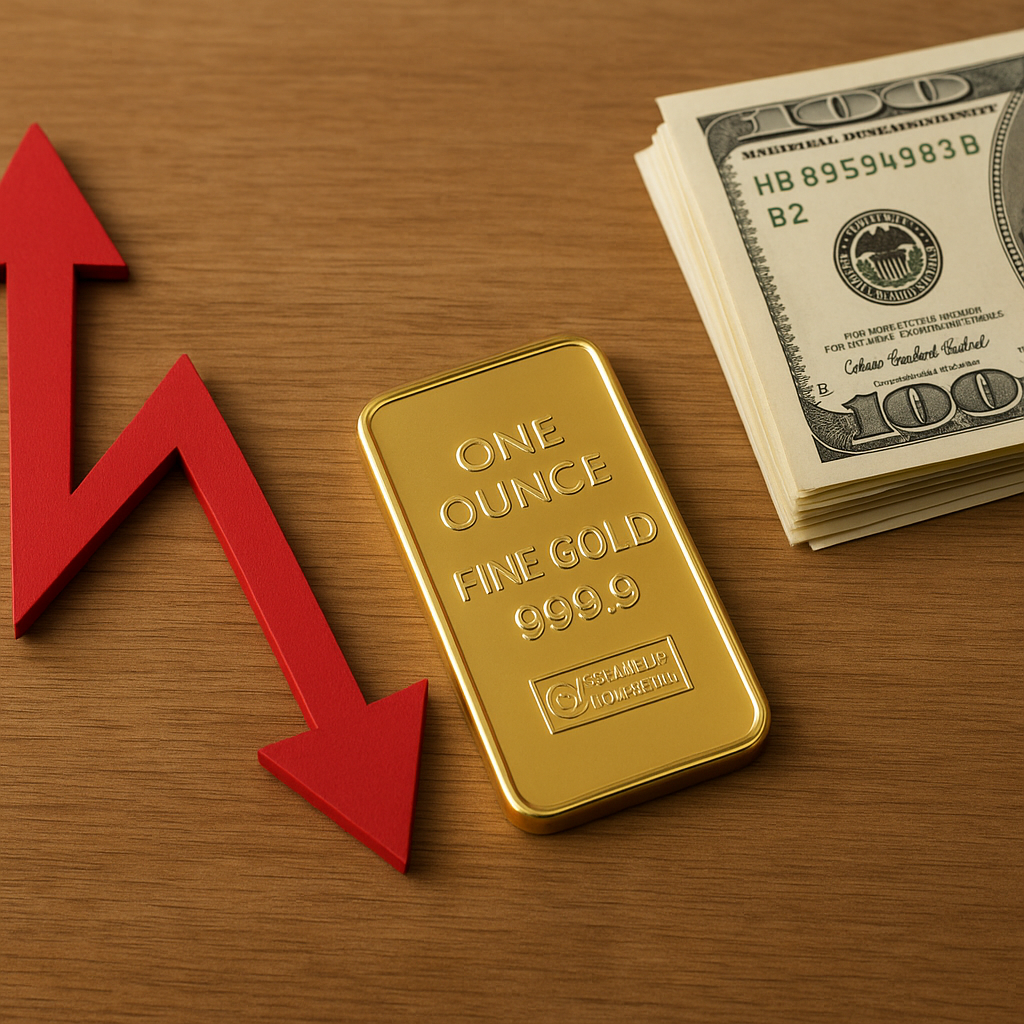The price of gold has long been a subject of fascination and analysis, particularly during periods of economic uncertainty. As a precious metal with intrinsic value, gold often serves as a safe haven for investors during economic recessions. This article delves into the trends of gold prices during such challenging times, exploring the factors that influence its value and the implications for investors and economies worldwide.
Understanding Gold as a Safe Haven Asset
Gold has historically been perceived as a safe haven asset, a status that becomes particularly pronounced during economic downturns. This perception is rooted in gold’s intrinsic value, its limited supply, and its historical role as a form of currency. During times of economic instability, investors often flock to gold as a means of preserving wealth, leading to fluctuations in its price.
One of the primary reasons gold is considered a safe haven is its ability to retain value when other assets, such as stocks and bonds, may be losing theirs. Unlike fiat currencies, which can be subject to inflationary pressures, gold’s value is not directly tied to any single economy or government. This makes it an attractive option for investors looking to hedge against currency devaluation and inflation.
Moreover, gold’s limited supply adds to its allure. Unlike paper money, which can be printed in unlimited quantities, the supply of gold is finite. This scarcity, combined with its historical significance, contributes to its perceived stability and reliability as an investment during economic recessions.
Historical Trends of Gold Prices During Recessions
Examining historical data reveals that gold prices often rise during economic recessions. This trend can be attributed to several factors, including increased demand from investors seeking a safe haven, central bank policies, and geopolitical uncertainties.
For instance, during the global financial crisis of 2008, gold prices surged as investors sought refuge from the collapsing stock markets and the devaluation of currencies. The crisis highlighted the vulnerabilities of the financial system, prompting a flight to safety that drove up the demand for gold. As a result, gold prices reached unprecedented levels, peaking at over $1,900 per ounce in 2011.
Similarly, during the economic downturn caused by the COVID-19 pandemic, gold prices once again experienced a significant increase. The uncertainty surrounding the pandemic, coupled with massive fiscal stimulus measures and low interest rates, fueled demand for gold as a hedge against potential inflation and currency devaluation. In August 2020, gold prices reached a new all-time high of over $2,000 per ounce.
These historical trends underscore the role of gold as a refuge during times of economic distress. However, it is important to note that while gold prices tend to rise during recessions, they are also influenced by a myriad of other factors, including interest rates, currency fluctuations, and geopolitical events.
Factors Influencing Gold Prices During Recessions
Several key factors influence gold prices during economic recessions, each contributing to the metal’s appeal as a safe haven asset. Understanding these factors can provide valuable insights for investors looking to navigate the complexities of the gold market during turbulent times.
Investor Sentiment and Demand
Investor sentiment plays a crucial role in driving gold prices during recessions. As economic uncertainty increases, so does the demand for safe haven assets like gold. This heightened demand can lead to significant price increases, as investors seek to protect their wealth from potential losses in other asset classes.
Moreover, during recessions, investors often reassess their risk tolerance and asset allocation strategies. This shift in sentiment can lead to increased allocations to gold, further driving up its price. The psychological aspect of investing in gold during uncertain times cannot be underestimated, as it often reflects broader market fears and anxieties.
Central Bank Policies
Central banks play a pivotal role in influencing gold prices during economic recessions. In response to economic downturns, central banks often implement monetary policies aimed at stimulating growth, such as lowering interest rates and increasing money supply. These measures can have a direct impact on gold prices.
Lower interest rates reduce the opportunity cost of holding non-yielding assets like gold, making it a more attractive investment option. Additionally, increased money supply can lead to concerns about inflation, prompting investors to seek refuge in gold as a hedge against potential currency devaluation.
Furthermore, central banks themselves are significant players in the gold market. Many central banks hold substantial gold reserves as part of their foreign exchange reserves, and their buying or selling activities can influence gold prices. During recessions, central banks may increase their gold holdings as a means of diversifying their reserves and mitigating risks associated with currency fluctuations.
Geopolitical Uncertainties
Geopolitical uncertainties often exacerbate economic recessions, further driving demand for gold as a safe haven asset. Political instability, conflicts, and trade tensions can create additional layers of uncertainty, prompting investors to seek refuge in gold.
For example, during periods of heightened geopolitical tensions, such as trade wars or military conflicts, gold prices often experience upward pressure. Investors view gold as a reliable store of value that can withstand geopolitical shocks, making it an attractive option during times of global instability.
Implications for Investors and Economies
The trends and factors influencing gold prices during economic recessions have significant implications for both investors and economies. Understanding these implications can help investors make informed decisions and navigate the complexities of the gold market during turbulent times.
Investment Strategies
For investors, the historical trends of rising gold prices during recessions highlight the importance of including gold in a diversified investment portfolio. Gold can serve as a hedge against economic uncertainty, providing a level of protection against potential losses in other asset classes.
However, it is important for investors to approach gold investment with a long-term perspective. While gold prices may rise during recessions, they can also be subject to volatility and fluctuations. Investors should consider their risk tolerance, investment goals, and time horizon when incorporating gold into their portfolios.
Additionally, investors should stay informed about the factors influencing gold prices, such as central bank policies, geopolitical events, and market sentiment. Keeping abreast of these developments can help investors make timely and informed decisions regarding their gold investments.
Economic Implications
The trends in gold prices during economic recessions also have broader implications for economies. Rising gold prices can signal underlying economic vulnerabilities and uncertainties, prompting policymakers to take action to stabilize financial markets and restore confidence.
Moreover, the increased demand for gold during recessions can have implications for global trade and currency markets. As investors seek refuge in gold, there may be shifts in capital flows and currency valuations, impacting international trade dynamics and economic relationships.
For countries with significant gold reserves, rising gold prices can provide a financial buffer during economic downturns. These reserves can be used to support national currencies, stabilize financial systems, and mitigate the impact of economic shocks.
Conclusion
Gold’s role as a safe haven asset during economic recessions is well-established, with historical trends demonstrating its ability to retain value and provide a refuge for investors during turbulent times. The factors influencing gold prices, including investor sentiment, central bank policies, and geopolitical uncertainties, underscore the complexity of the gold market and its significance in the global economy.
For investors, understanding these trends and factors is crucial for making informed decisions and navigating the challenges of economic recessions. By incorporating gold into a diversified investment portfolio and staying informed about market developments, investors can harness the potential benefits of gold as a hedge against economic uncertainty.
As economies continue to face challenges and uncertainties, the allure of gold as a safe haven asset is likely to persist, reinforcing its status as a valuable component of investment strategies and a key indicator of economic sentiment.












